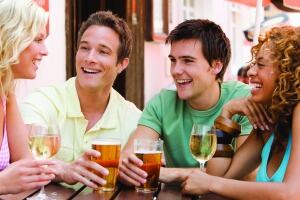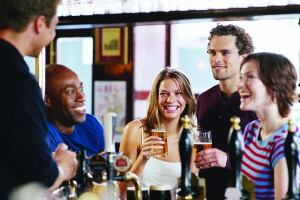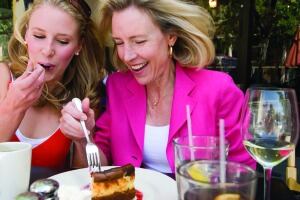On the face of it, the latest Health and Social Care Information Centre (HSCIC) health survey for England (HSE) makes for depressing reading if you are a publican.
HSCIC suggests that the percentage of people in England who regularly drink at home and out of the home combined is falling, and between 2005 and 2012, the percentage of men who drank alcohol in the week before interview fell by 8% to 64%, and the percentage of women 5% to 52%.
HSE data also shows an 8% fall to 14% in the percentage of men who were frequent drinkers — those who drank alcohol on at least five days in the week before interview — and a 4% fall to 9% in women.
Furthermore, real-terms household spending on alcoholic drinks increased 1.3% between 2009 and 2012 while that bought for consumption outside the home fell 9.8%.
Opportunities

However Fergus Clark, managing director of Inveralmond Brewery, says the research should not necessarily be seen as negative for publicans, and that the market is simply changing, as are the opportunities.
“Consumers are seeking out higher margin products and a quality experience. This means publicans need to stop thinking about their offer in terms of volume and start thinking about its inherent value.”
Clark says Inveralmond’s trade customers have been open to diversification. “With a more Continental attitude to drinking, not only is the time spent in the pub extended, but a reduction in the resultant anti-social behaviour means pubs will become more appealing, family-friendly places.”
Tweedies Bar, in Grasmere, Cumbria, is one of those licensed premises which insists its ethos is not just about getting footfall but creating an experience to generate loyalty and attract the tourist market.
Manager Alex Goodall says: “We have established a product offering that you can’t buy on the high street — and that elevates our position in a competitive arena.”
He says its 10 hand pumps serving cask ales and ciders on tap support local suppliers and make it distinctive. Coupled with “realistic” prices, Goodall says this is why the business is enjoying year-on-year growth despite the reported decline in drinking outside the home.

Tweedies has removed slot machines, welcomed dogs, and hosts live bands. “Each night when we host an event we increase our beverage revenue by at least 25% — naturally, this has a positive effect on the food- revenue stream, which is imperative to the success of the bar,” he says.
He adds that Tweedies’ annual Grasmere Guzzler music and beer festival draws hundreds of people from across the area.
Quality
Star Pubs & Bars generally advises its lessees to diversify and create businesses with several income streams. Trading director Chris Jowsey says: “Our long-term ambition is that at least 50% of sales in our estate will come from food.”
He notes that providing a quality of service that is not available to those drinking at home is essential — hence the company’s emphasis on cellar management and perfect pour training, supported by its early adoption of developments such as Smart Dispense. Ambiance and quality are also key to encourage people out of their homes, Jowsey says.

Jonathan Pritchard, managing partner at digital agency Tangent Snowball, points out the trend of people going out less often is masking the fact that when they do so they are buying premium products and having food alongside their drinks.
“The craft movement has worked: people are spending more per bottle or pint when they go out, but going out less, or drinking less when they do go out.
“The more middle-aged pub-going demographic, in particular, tends to want the innovation that the craft- beer movement has offered. The younger demographics are still driven by promotions and offers, the rhythm of their night of course being very different and typically starting with drinks at home at supermarket prices before they go out,” Pritchard says.
Top tips
- Stock local ales and use key local farms and butchers for signature dishes to produce a great feel-good factor.

- Tap into a variety of markets at different times of day, Pitcher & Piano-style, for coffee mornings, business lunches, afternoon sports, shift workers and retired people, and then the post-work and out-for-the-evening market.
- Engage in event-driven marketing, family-oriented promotions and specialist food nights, creating a theme with new drinks and food/drink combos.
- Advertise locally on online forums and in complementary local shops where there is good footfall. Posters around key local sites quickly prompt word-of-mouth marketing.
- Service and delivering what customers expect is key to retaining footfall and new punters: clean branded glasses, clean toilets, well-served and cooked food, clean tables, polite and helpful staff.
